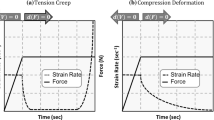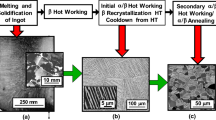Abstract
Nb3Sn is widely accepted as the enabling technology for high field superconducting magnets. However, it is brittle and with strain-sensitive superconducting properties. In high field applications, Nb3Sn strand experiences significant elastoplastic strain or even damage which causes degradation in its current carrying capacity. In this work, a 3D mean-field homogenization model based on the incremental micromechanics scheme is developed to investigate the elastoplastic damage and irreversible degradation of the twisted multifilamentary Nb3Sn strand. The effective stress-strain curves and strain distribution in the Nb3Sn filaments are calculated for the strand under monotonic and cyclic loads. The invariant strain scaling law supplemented with the damage-induced reduction is adopted to characterize the irreversible degradation of the critical current. It is found that twisting plays an important role in elastoplastic damage and strain-induced critical current degradation. With the increasing of twist pitch, the strand becomes stiffer and the strain limit surpasses which the filaments start to damage sharply decreases. Both the accumulated residual strain and damage of the filaments contribute to the irreversible degradation of the critical current. The experimentally observed “strain irreversibility cliff” is the result of damage to the Nb3Sn filaments. From a mechanical point of view, a short twist pitch will be a good choice to alleviate the strain-induced irreversible degradation of the Nb3Sn strands.

摘要
Nb3Sn被广泛接受是实现高场超导磁体的关键材料. 然而, Nb3Sn是脆性材料且其超导性能具有应变敏感性. 在强磁场应用中, Nb3Sn股线会受到显著的弹塑性应变甚至损伤, 导致其载流能力下降. 本文基于细观力学方法建立了三维平均场均匀化模型, 研究多芯绞扭Nb3Sn超导股线的弹塑性损伤行为和临界电流的不可逆退化. 计算股线在单调和循环载荷作用下的等效应力-应变曲线以及Nb3Sn 内部的应变分布. 采用辅以损伤引起退化的应变不变量标度律来表征临界电流的不可逆退化. 研究发现, 绞扭对股线弹塑性损伤行为和应变导致的临界电流退化起着重要作用. 随着绞扭节距的增大, 复合股线的刚度增大, 应变极限(超过该极限时芯丝开始损伤)急剧减小. 累积残余应变和芯丝的损伤共同导致超导股线临界电流的不可逆退化. 实验观察到的“断崖式不可逆退化”是由于Nb3Sn芯丝的损伤造成的. 从力学的角度, 短绞节距是缓解应变引起超导股线临界电流不可逆退化的良好选择.
Similar content being viewed by others
References
A. den Ouden, S. Wessel, E. Krooshoop, and H. ten Kate, Application of Nb3Sn superconductors in high-field accelerator magnets, IEEE Trans. Appl. Supercond. 7, 733 (1997).
D. Ciazynski, Review of Nb3Sn conductors for ITER, Fusion Eng. Des. 82, 488 (2007).
X. Xu, A review and prospects for Nb3Sn superconductor development, Supercond. Sci. Technol. 30, 093001 (2017).
R. G. Sharma, Superconductivity: Basics and Applications to Magnets (Springer International Publishing, Cham, 2015).
M. T. Dylla, S. E. Schultz, and M. C. Jewell, Fracture strength distribution of individual Nb3Sn filaments, IEEE Trans. Appl. Supercond. 26, 1 (2016).
A. Devred, I. Backbier, D. Bessette, G. Bevillard, M. Gardner, C. Jong, F. Lillaz, N. Mitchell, G. Romano, and A. Vostner, Challenges and status of ITER conductor production, Supercond. Sci. Technol. 27, 044001 (2014).
N. Mitchell, M. Breschi, and V. Tronza, The use of Nb3 Sn in fusion: Lessons learned from the ITER production including options for management of performance degradation, Supercond. Sci. Technol. 33, 054007 (2020).
X. J. Zheng, Preface: Mechanical perturbations induced quench: A challenge of superconductor mechanics. Natl. Sci. Rev. 10, nwad044 (2023).
Y. H. Zhou, D. Park, and Y. Iwasa, Review of progress and challenges of key mechanical issues in high-field superconducting magnets, Natl. Sci. Rev. 10, nwad001 (2023).
X. Zhang, and J. Qin, Mechanical effects: Challenges for high-field superconducting magnets, Natl. Sci. Rev. 10, nwac220 (2023).
A. Nijhuis, R. P. Pompe van Meerdervoort, H. J. G. Krooshoop, W. A. J. Wessel, C. Zhou, G. Rolando, C. Sanabria, P. J. Lee, D. C. Larbalestier, A. Devred, A. Vostner, N. Mitchell, Y. Takahashi, Y. Nabara, T. Boutboul, V. Tronza, S. H. Park, and W. Yu, The effect of axial and transverse loading on the transport properties of ITER Nb3Sn strands, Supercond. Sci. Technol. 26, 084004 (2013).
A. Nijhuis, Y. Ilyin, S. Wessel, E. Krooshoop, L. Feng, and Y. Miyoshi, Summary of ITER TF Nb3Sn strand testing under axial strain, spatial periodic bending and contact stress, IEEE Trans. Appl. Supercond. 19, 1516 (2009).
L. Muzzi, V. Corato, A. della Corte, G. De Marzi, T. Spina, J. Daniels, M. Di Michiel, F. Buta, G. Mondonico, B. Seeber, R. Flükiger, and C. Senatore, Direct observation of Nb3Sn lattice deformation by high-energy x-ray diffraction in internal-tin wires subject to mechanical loads at 4.2 K, Supercond. Sci. Technol. 25, 054006 (2012).
F. Shen, H. Zhang, C. Huang, and L. Li, Experimental study on strain sensitivity of internal-Tin Nb3Sn superconducting strand based on non-destructive technology, Physica C 584, 1353784 (2021).
J. W. Ekin, Strain scaling law for flux pinning in practical superconductors. Part 1: Basic relationship and application to Nb3Sn conductors, Cryogenics 20, 611 (1980).
D. M. J. Taylor, and D. P. Hampshire, The scaling law for the strain dependence of the critical current density in Nb3Sn superconducting wires, Supercond. Sci. Technol. 18, S241 (2005).
A. Godeke, B. ten Haken, H. H. J. ten Kate, and D. C. Larbalestier, A general scaling relation for the critical current density in Nb3Sn, Supercond. Sci. Technol. 19, R100 (2006).
W. D. Markiewicz, Elastic stiffness model for the critical temperature Tc of Nb3Sn including strain dependence, Cryogenics 44, 767 (2004).
W. D. Markiewicz, Invariant temperature and field strain functions for Nb3Sn composite superconductors, Cryogenics 46, 846 (2006).
R. Zhang, P. Gao, and X. Wang, Strain dependence of critical superconducting properties of Nb3Sn with different intrinsic strains based on a semi-phenomenological approach, Cryogenics 86, 30 (2017).
J. W. Ekin, Unified scaling law for flux pinning in practical superconductors: I. Separability postulate, raw scaling data and parameterization at moderate strains, Supercond. Sci. Technol. 23, 083001 (2010).
J. W. Ekin, N. Cheggour, L. Goodrich, J. Splett, B. Bordini, and D. Richter, Unified scaling law for flux pinning in practical superconductors: II. Parameter testing, scaling constants, and the extra-polative scaling expression, Supercond. Sci. Technol. 29, 123002 (2016).
J. W. Ekin, N. Cheggour, L. Goodrich, and J. Splett, Unified Scaling Law for flux pinning in practical superconductors: III. Minimum datasets, core parameters, and application of the extrapolative scaling expression, Supercond. Sci. Technol. 30, 033005 (2017).
D. P. Boso, M. Lefik, and B. A. Schrefler, Homogenisation methods for the thermo-mechanical analysis of Nb3Sn strand, Cryogenics 46, 569 (2006).
J. Chen, K. Han, and P. N. Kalu, 3D stress-strain model of the Nb3Sn wire, IEEE Trans. Appl. Supercond. 21, 2509 (2011).
E. Q. Sun, Multi-scale nonlinear stress analysis of Nb3Sn superconducting accelerator magnets, Supercond. Sci. Technol. 35, 045019 (2022).
Y. Feng, H. Yong, and Y. Zhou, Efficient multiscale investigation of mechanical behavior in Nb3Sn superconducting accelerator magnet based on self-consistent clustering analysis, Compos. Struct. 324, 117541 (2023).
K. Osamura, S. Machiya, Y. Tsuchiya, H. Suzuki, T. Shobu, M. Sato, T. Hemmi, Y. Nunoya, and S. Ochiai, Local strain and its influence on mechanical-electromagnetic properties of twisted and untwisted ITER Nb3Sn strands, Supercond. Sci. Technol. 25, 054010 (2012).
M. Ahoranta, J. Lehtonen, and T. Tarhasaari, Modelling the effect of twisting on electro-mechanical properties of Nb3Sn conductors, Cryogenics 49, 694 (2009).
Z. Jing, H. Yong, and Y. Zhou, Theoretical modeling for the effect of twisting on the properties of multifilamentary Nb3Sn superconducting strand, IEEE Trans. Appl. Supercond. 23, 6000307 (2013).
B. Liu, Z. Jing, H. Yong, and Y. Zhou, Strain distributions in superconducting strands with twisted filaments, Compos. Struct. 174, 158 (2017).
D. M. J. Taylor, S. A. Keys, and D. P. Hampshire, Reversible and irreversible effects of strain on the critical current density of a niobium-tin superconducting wire, Cryogenics 42, 109 (2002).
L. F. Goodrich, N. Cheggour, X. F. Lu, J. D. Splett, T. C. Stauffer, and B. J. Filla, Method for determining the irreversible strain limit of Nb3Sn wires, Supercond. Sci. Technol. 24, 075022 (2011).
N. Cheggour, T. C. Stauffer, W. Starch, P. J. Lee, J. D. Splett, L. F. Goodrich, and A. K. Ghosh, Precipitous change of the irreversible strain limit with heat-treatment temperature in Nb3Sn wires made by the restacked-rod process, Sci. Rep. 8, 13048 (2018).
N. Cheggour, T. C. Stauffer, W. Starch, L. F. Goodrich, and J. D. Splett, Implications of the strain irreversibility cliff on the fabrication of particle-accelerator magnets made of restacked-rod-process Nb3Sn wires, Sci. Rep. 9, 5466 (2019).
X. Wang, Y. Gao, and Y. Zhou, Electro-mechanical behaviors of composite superconducting strand with filament breakage, Physica C 529, 26 (2016).
X. Wang, Y. Li, and Y. Gao, Mechanical behaviors of multi-filament twist superconducting strand under tensile and cyclic loading, Cryogenics 73, 14 (2016).
L. Jiang, X. Su, L. Shen, J. Zhou, and X. Zhang, Damage behavior of Nb3Sn/Cu superconducting strand at room temperature under asymmetric strain cycling, Fusion Eng. Des. 172, 112869 (2021).
L. Jiang, X. Zhang, and Y. H. Zhou, Nonlinear static and dynamic mechanical behaviors of Nb3Sn superconducting composite wire: Experiment and analysis, Acta Mech. Sin. 39, 122322 (2023).
T. Mura, Micromechanics of Defects in Solids (Springer Netherlands, Dordrecht, 1987).
G. L. Shen, G. K. Hu, and B. Liu, Mechanics of Composite Materials (Tsinghua University Press, Beijing, 2013).
T. Mori, and K. Tanaka, Average stress in matrix and average elastic energy of materials with misfitting inclusions, Acta Metall. 21, 571 (1973).
J. D. Eshelby, The determination of the elastic field of an ellipsoidal inclusion, and related problems, Royal Society, 241, 376 (1957).
I. Doghri, Mechanics of Deformable Solids (Springer, Berlin, Heidelberg, 2000).
I. Doghri, and A. Ouaar, Homogenization of two-phase elasto-plastic composite materials and structures, Int. J. Solids Struct. 40, 1681 (2003).
J. Mazars, and G. Pijaudier-Cabot, Continuum damage theory—Application to concrete, J. Eng. Mech. 115, 345 (1989).
S. Murakami, Continuum Damage Mechanics (Springer Netherlands, Dordrecht, 2012).
W. L. Azoti, A. Tchalla, Y. Koutsawa, A. Makradi, G. Rauchs, S. Belouettar, and H. Zahrouni, Mean-field constitutive modeling of elasto-plastic composites using two (2) incremental formulations, Compos. Struct. 105, 256 (2013).
A. Tchalla, W. L. Azoti, Y. Koutsawa, A. Makradi, S. Belouettar, and H. Zahrouni, Incremental mean-fields micromechanics scheme for non-linear response of ductile damaged composite materials, Compos. Part B-Eng. 69, 169 (2015).
E. Barzi, G. Ambrosio, N. Andreev, R. Bossert, R. Carcagno, S. Feher, V. S. Kashikhin, V. V. Kashikhin, M. J. Lamm, F. Nobrega, I. Novitski, Y. Pishalnikov, C. Sylvester, M. Tartaglia, D. Turrioni, R. Yamada, A. V. Zlobin, M. Field, S. Hong, J. Parrell, and Y. Zhang, Performance of Nb3Sn RRP strands and cables based on a 108/127 stack design, IEEE Trans. Appl. Supercond. 17, 2718 (2007).
N. Mitchell, Finite element simulations of elasto-plastic processes in Nb3Sn strands, Cryogenics 45, 501 (2005).
Acknowledgements
This work was supported by the National Natural Science Foundation of China (Grant Nos. 11602185, 11972271, and 12322208), the Young Elite Scientists Sponsorship Program by CAST (Grant No. 2020QNRC001), and the Fundamental Research Funds for the Central Universities.
Author information
Authors and Affiliations
Contributions
Author contributions Ze Jing designed the model and the computational framework of this study, made numerical simulations, and wrote and edited the manuscript. Yu Zhang collected experimental data and aided in preparing the figures and tables.
Corresponding author
Ethics declarations
Conflict of interest On behalf of all authors, the corresponding author states that there is no conflict of interest.
Rights and permissions
About this article
Cite this article
Jing, Z., Zhang, Y. Micromechanical modelling on the elastoplastic damage and irreversible critical current degradation of the twisted multi-filamentary Nb3Sn superconducting strand. Acta Mech. Sin. 40, 723661 (2024). https://doi.org/10.1007/s10409-024-23611-x
Received:
Accepted:
Published:
DOI: https://doi.org/10.1007/s10409-024-23611-x




